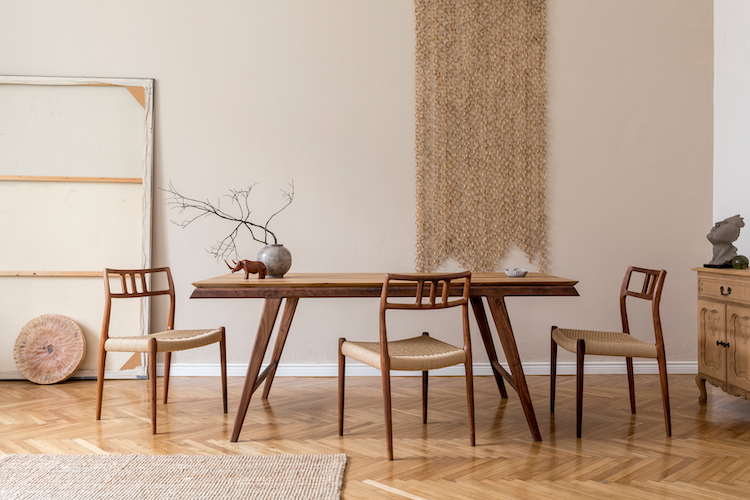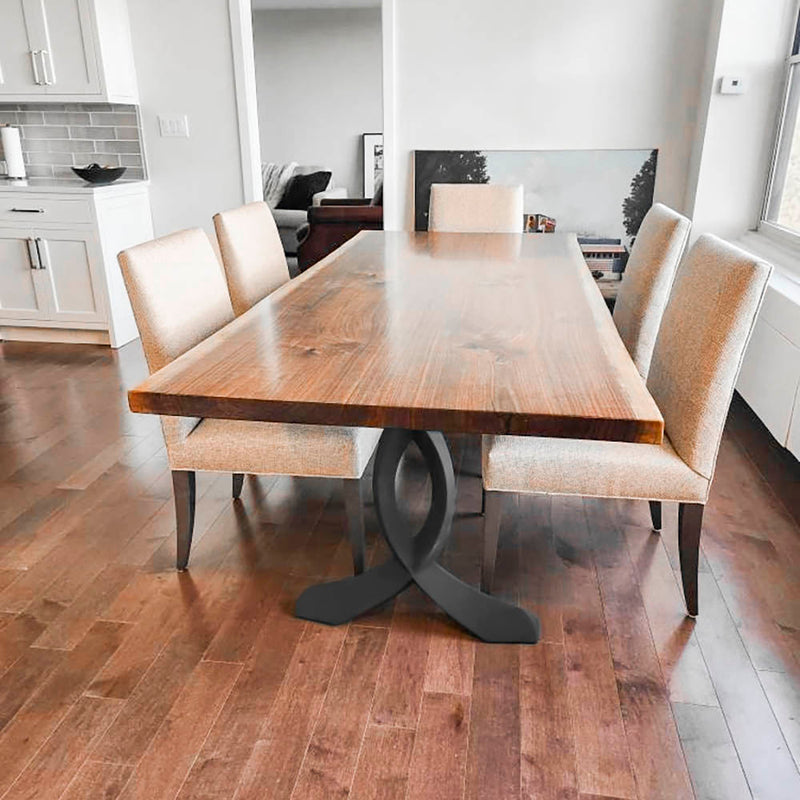Exactly How to Select the Perfect Eating Space Table Legs for Your Home Decor
Picking the excellent eating space table legs is a nuanced process that requires careful factor to consider of numerous aspects, including your area restraints, aesthetic choices, and sensible demands. The interplay in between measurements, products, and styles can dramatically affect the ambiance of your eating area, making it vital to approach this decision carefully.
Assess Your Dining Room
Analyzing your dining room is important for selecting the right table legs that enhance both appearances and performance. Begin by measuring the measurements of your dining location, including ceiling elevation, floor area, and proximity to various other furniture. This info will assist determine the ideal size and elevation of your table, which straight affects the option of table legs.
Following, consider the style and design of your eating space. An open-concept layout may benefit from table legs that use aesthetic agility, such as slender metal or acrylic choices. Alternatively, an extra conventional setting may ask for sturdy wooden legs that offer a sense of durability.
Review the existing shade scheme and products in your dining area. Harmonizing the table legs with these components develops a natural appearance that improves the overall decor.
Ultimately, a comprehensive evaluation of your eating room will direct you in making an informed choice, making certain that your table legs not just improve the visual allure yet likewise serve practical objectives.
Consider Your Style Preferences
When choosing dining-room table legs, it is vital to assess your personal design preferences, as they significantly affect the general aesthetic of your eating space. Your selection of table legs can either enhance or contrast with existing décor, making it crucial to straighten them with your preferred indoor style theme.
If your home leans in the direction of a contemporary aesthetic, think about sleek steel or minimalist wood legs that offer a tidy, clean appearance. For a much more traditional strategy, ornate wood legs with elaborate makings can add a touch of style and elegance. Industrial designs take advantage of durable, raw materials such as recovered timber and metal mixes, reflecting a tough charm.
Furthermore, farmhouse and rustic designs frequently prefer sturdy, beefy legs that stimulate a feeling of heat and comfort. Conversely, if your décor is diverse, you could choose unusual shapes or a mix of materials to develop visual rate of interest.

Evaluate Material Options
The option of material for dining space table legs plays a crucial duty in both sturdiness and visual charm. Usual materials consist of timber, steel, and composite options, each offering distinct characteristics that can influence the overall look and longevity of your table.
Wood is a classic choice, known for its warmth and flexibility. Hardwoods like oak and walnut offer extraordinary stamina and can be completed in different spots to match any design. However, softwoods like yearn are more prone to scrapes and damages, making them much less excellent for high-traffic areas.
Metal legs, often crafted from steel or light weight aluminum, show modernity and commercial appeal. They are immune and highly durable to put on, making them appropriate for families with youngsters or regular events (dining room table legs). Additionally, steel can be finished in numerous shades, enhancing the modification opportunities
Composite materials, such as my blog MDF or laminate, deal cost and varied styles. While generally much less long lasting than solid timber or metal, they can still supply a trendy look and are commonly easy to keep.
Ultimately, the product you choose ought to align with your lifestyle, visual preferences, and the level of use your eating table will experience.
Determine Elevation and Size
Choosing the appropriate elevation and size for your dining area table is necessary for both functionality and convenience. The standard elevation for eating tables usually varies from 28 to 30 inches, allowing adequate legroom for most people when seated. It is crucial to take into consideration the dimensions of your dining area and the kinds of chairs you intend to use.

Moreover, take into consideration the percentages of your dining-room. A bigger table in a sizable location can develop a grand setting, while a smaller sized table functions well in even more intimate setups. Eventually, the ideal elevation and dimension will balance with your overall design and enhance the dining experience for you and your guests.
Explore Customization Opportunities

In addition, the design of the legs can be customized to fit numerous styles, such as rustic, modern-day, or commercial. For instance, conical legs can evoke a mid-century modern-day feel, while chunky, block-style legs might resonate with typical or farmhouse style.
Homeowners can also discover color finishes, from all-natural wood spots to paint, enabling them to match or comparison with the tabletop and bordering decor.
In addition, leg height can be adapted to accommodate details seating arrangements or individual find more information choices, improving both convenience and functionality.
Finally, unique embellishments, such as makings or decorative brackets, can better personalize the table legs, making the dining experience not simply a declaration but a meal item in the home. By taking into consideration these modification options, house owners can develop a dining-room table that genuinely mirrors their individuality.
Final Thought
Choosing the ideal dining space table legs calls for mindful consideration of various aspects, consisting of the measurements of the eating space, style preferences, material toughness, and wanted elevation. Customization options even more improve the capability to attain a natural visual that enhances the total style. By methodically evaluating these elements, homeowners can guarantee that the selected table legs not only satisfy practical requirements but also contribute positively to the eating experience and setting of the home.
Picking the ideal like this eating area table legs is a nuanced procedure that needs cautious consideration of various elements, including your space restraints, visual choices, and functional requirements.Evaluating your dining space is crucial for picking the right table legs that enhance both appearances and capability.When figuring out size, measure the location where the table will certainly be placed to ensure it fits pleasantly, enabling for at least 36 inches of clearance around the table for easy activity. A larger table in a spacious location can produce a grand ambiance, while a smaller sized table functions well in more intimate setups.Choosing the perfect eating space table legs requires mindful consideration of various variables, including the dimensions of the eating space, design choices, material sturdiness, and preferred elevation.